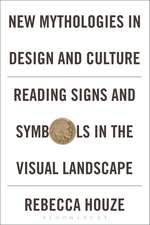Managing Engineering Design
Autor Crispin Hales, Shayne Goochen Limba Engleză Hardback – 30 aug 2004
"This remarkable book, based on sound empirical research and design project experience, will be an enormous help to design managers and design engineers…" Professor Ken Wallace, University of Cambridge
"The practical approach of Hales and Gooch particularly appealed to me… [they] manage to pull together a concise package of best practice in engineering management and successfully tie together the different activities that are often presented as unconnected. This is no minor feat and I lift my hat to them."
Doctor Roope Takala, Program Manager, Nokia Group
| Toate formatele și edițiile | Preț | Express |
|---|---|---|
| Paperback (1) | 639.25 lei 43-57 zile | |
| SPRINGER LONDON – 3 oct 2013 | 639.25 lei 43-57 zile | |
| Hardback (1) | 892.28 lei 43-57 zile | |
| SPRINGER LONDON – 30 aug 2004 | 892.28 lei 43-57 zile |
Preț: 892.28 lei
Preț vechi: 1088.15 lei
-18% Nou
Puncte Express: 1338
Preț estimativ în valută:
170.74€ • 178.72$ • 142.11£
170.74€ • 178.72$ • 142.11£
Carte tipărită la comandă
Livrare economică 31 martie-14 aprilie
Preluare comenzi: 021 569.72.76
Specificații
ISBN-13: 9781852338039
ISBN-10: 1852338032
Pagini: 272
Ilustrații: XII, 252 p.
Dimensiuni: 155 x 235 x 22 mm
Greutate: 0.48 kg
Ediția:2nd ed. 2004
Editura: SPRINGER LONDON
Colecția Springer
Locul publicării:London, United Kingdom
ISBN-10: 1852338032
Pagini: 272
Ilustrații: XII, 252 p.
Dimensiuni: 155 x 235 x 22 mm
Greutate: 0.48 kg
Ediția:2nd ed. 2004
Editura: SPRINGER LONDON
Colecția Springer
Locul publicării:London, United Kingdom
Public țintă
Professional/practitionerCuprins
0.- 0.1 Terminology.- 0.2 Examples.- 1 The Context.- 1 Ways of Thinking about Engineering Design.- 2 The Project Context.- 2 Task,Team and Tools.- 3 Profiling the Project.- 4 Managing the Design Team.- 3 The Project.- 5 Project Proposal: Getting the Job.- 6 Design Specification: Clarification of the Task.- 7 Feasible Concept: Conceptual Design.- 8 Developed Concept: Embodiment Design.- 9 Final Design: Detail Design for Manufacture.- 10 Users and Customers: Design Feedback.- 11 Standards and Codes.- 12 Engineering Design Process: Review and Analysis.- 241.- 243.- 247.
Recenzii
Industrial organisations are facing increasing international pressure. To remain in business, they must continually design new competitive products. These products, and the processes by which they are designed, are becoming increasingly complex. A mistake during the design process becomes more costly to rectify the later it is discovered - and can have particularly damaging consequences if it is not discovered until the product is in use. High quality engineering design and the sound management of engineering design projects are therefore crucial to the financial success of industrial organisations.
Design managers and design engineers face a daunting task and need all the help they can get. This help must address the complexity of the design process, be simple to understand and capable of being applied quickly and effectively. This clearly written book, which is full of valuable guidance supported by its unique checklists and worksheets, provides practical and effective help.
When managing any project, it is important during every phase of the project to identify and understand the factors that are influencing the progress of the project. Once the key influencing factors have been identified, the available resources can be deployed to maximise the positive influences and minimise the negative ones...
Hales and Gooch argue that successful management of the design team requires the effective handling of three issues: the activities of the team; the outputs from the team; and the influences on the team. Each issue is carefully addressed in the book, which has a clear and logical structure divided into three parts. Part I addresses the overall context within which a project takes place. Part II discusses the task to be undertaken, the team that will undertake the task and the tools available to help. Part III focuses on each phase of the project itself. To clarify the arguments being presented, two case studies provideexamples throughout the book. The first is complex made-to-order engineering product, the gasifier test rig, and the second is a mass-produced consumer product, the Life chair. These two contrasting examples demonstrate how the ideas and techniques described in the book can be applied to a wide range of engineering design projects. At the end of each chapter there are helpful ‘tips for management’ drawn from the results of the authors’ empirical research and experience.
Using the checklists and worksheets, design managers and design engineers are quickly able to gain insights into the current status of their project. Key factors influencing the progress of the project can thus be highlighted and the appropriate action taken.
This remarkable book, based on sound empirical research and design project experience, will be an enormous help to design managers and design engineers, who are under ever increasing pressure to design safe, reliable and cost-effective products to ever tighter project deadlines.
Ken Wallace
17 November 2003
In the second edition of their book Managing Engineering Design Hales and Gooch approach the problem of moving engineering management theory into practice. The topic is more complex than one would anticipate as almost every company has their own blend of engineering management. Hales and Gooch, however, manage to pull together a concise package of best practices in engineering management and successfully tie together the different activities that often are presented unconnected. This is no minor feat and I lift my hat to that.
I was particularly appealed to the practical approach of Hales and Gooch. The use of current and well-known products, like the human transporter by Segway, as examples made reading the book interesting and pleasurable. In contrast to many other works in the area Hales and Gooch rightly note that modern design is group work and as a result communication is a key to successfulmanagement. Practitioners of engineering design management will hail the inclusion of checklists in electronic format.
On the whole the book proved to be worthwhile and pleasant reading.
Roope Takala, Program Manager, Nokia Group
Design managers and design engineers face a daunting task and need all the help they can get. This help must address the complexity of the design process, be simple to understand and capable of being applied quickly and effectively. This clearly written book, which is full of valuable guidance supported by its unique checklists and worksheets, provides practical and effective help.
When managing any project, it is important during every phase of the project to identify and understand the factors that are influencing the progress of the project. Once the key influencing factors have been identified, the available resources can be deployed to maximise the positive influences and minimise the negative ones...
Hales and Gooch argue that successful management of the design team requires the effective handling of three issues: the activities of the team; the outputs from the team; and the influences on the team. Each issue is carefully addressed in the book, which has a clear and logical structure divided into three parts. Part I addresses the overall context within which a project takes place. Part II discusses the task to be undertaken, the team that will undertake the task and the tools available to help. Part III focuses on each phase of the project itself. To clarify the arguments being presented, two case studies provideexamples throughout the book. The first is complex made-to-order engineering product, the gasifier test rig, and the second is a mass-produced consumer product, the Life chair. These two contrasting examples demonstrate how the ideas and techniques described in the book can be applied to a wide range of engineering design projects. At the end of each chapter there are helpful ‘tips for management’ drawn from the results of the authors’ empirical research and experience.
Using the checklists and worksheets, design managers and design engineers are quickly able to gain insights into the current status of their project. Key factors influencing the progress of the project can thus be highlighted and the appropriate action taken.
This remarkable book, based on sound empirical research and design project experience, will be an enormous help to design managers and design engineers, who are under ever increasing pressure to design safe, reliable and cost-effective products to ever tighter project deadlines.
Ken Wallace
17 November 2003
In the second edition of their book Managing Engineering Design Hales and Gooch approach the problem of moving engineering management theory into practice. The topic is more complex than one would anticipate as almost every company has their own blend of engineering management. Hales and Gooch, however, manage to pull together a concise package of best practices in engineering management and successfully tie together the different activities that often are presented unconnected. This is no minor feat and I lift my hat to that.
I was particularly appealed to the practical approach of Hales and Gooch. The use of current and well-known products, like the human transporter by Segway, as examples made reading the book interesting and pleasurable. In contrast to many other works in the area Hales and Gooch rightly note that modern design is group work and as a result communication is a key to successfulmanagement. Practitioners of engineering design management will hail the inclusion of checklists in electronic format.
On the whole the book proved to be worthwhile and pleasant reading.
Roope Takala, Program Manager, Nokia Group
Caracteristici
Shows the reader how to manage the process of design to get the optimum result at least expense in time and money Helps the engineering designer understand what is required by those responsible for managing his projects and helps the manager to accommodate the requirements of the designer Electronic data sheets and work planners reduce the irksome planning and bureaucracy for a project and allow easy standardisation of procedures Includes supplementary material: sn.pub/extras













